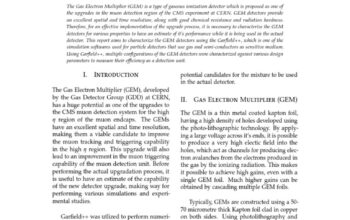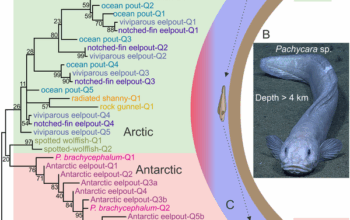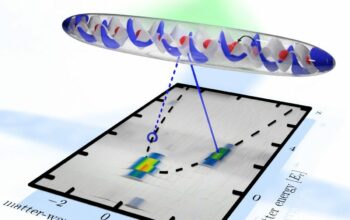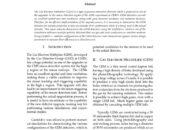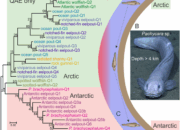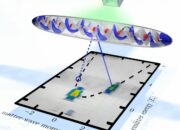The domain of quantum physics has long been dominated by the ethereal and often elusive principles that govern the subatomic world. For decades, the manipulation of quantum states required extreme conditions, such as near absolute zero temperatures, to achieve significant phenomena like quantum entanglement. However, recent advancements have paved the way for new investigations into the realm of room-temperature quantum systems, particularly through the utilization of diamond-based technologies. This represents a paradigm shift that not only has theoretical implications but also practical applications across various fields, including quantum computing, secure communication, and advanced sensing technologies.
The phenomenon of quantum entanglement, a cornerstone of quantum mechanics, describes a scenario in which particles become intimately linked, such that the state of one particle instantaneously influences the state of another, regardless of the spatial distance separating them. Historically, this phenomenon has necessitated the use of cryogenic techniques to stabilize and isolate quantum states. The necessity of cryogenics, while effective, poses logistical challenges—particularly in terms of scalability, integration, and cost. The advent of quantum systems that operate at ambient temperatures, especially those involving diamond structures, signifies a monumental leap in the quest for practical quantum technology.
At the heart of exploiting diamond for quantum applications lies the nitrogen-vacancy (NV) center. A defect within the diamond lattice, an NV center consists of a nitrogen atom replacing a carbon atom adjacent to a vacant site in the crystal structure. This configuration gives rise to unique electronic properties, particularly due to its ability to function as a qubit, the fundamental unit of quantum information. The compelling nature of NV centers emanates from their stability and coherence at room temperature, allowing researchers to manipulate quantum states without the daunting challenges posed by cryogenic environments. Consequently, these NV centers become exemplary candidates for facilitating entangled states crucial for various quantum applications.
The primary appeal of room-temperature quantum systems lies in their heightened practicality. The engineering of NV centers to establish quantum entanglement can occur in real-world settings without complex cooling machinery. This accessibility may catalyze a transformation in how quantum technologies are developed and deployed, accelerating research endeavors, and fostering collaboration between physicists, engineers, and technologists. Furthermore, this technology could expedite the development of quantum networks that empower secure communication channels through quantum key distribution (QKD) protocols. By harnessing the unique characteristics of entangled state pairs of NV centers, one could achieve unprecedented levels of security in transmitting sensitive information.
Moreover, the implications of diamond-based quantum systems extend far beyond secure communications. In the domain of quantum computing, the ability to operate at room temperature necessitates a reevaluation of conventional architectures. With diamond qubits, researchers may achieve higher scalability and energy efficiency, thereby paving the way for more sophisticated computational models capable of solving complex problems beyond the reach of classical computers. Algorithms reliant on quantum parallelism could thrive within this newly accessible computational framework, enhancing fields such as materials science, cryptography, and artificial intelligence.
In addition to the computational and communicative functionalities, diamond NV centers present valuable applications in quantum sensing. These systems exhibit extreme sensitivity to external perturbations, including electromagnetic fields and temperature variations. The implications for precision measurement in fields such as medical diagnostics and environmental monitoring could be transformative. By exploiting the coherence properties of room-temperature entangled NV centers, innovative sensors may emerge that are capable of detecting minute changes within their surroundings, achieving unprecedented resolution and sensitivity.
However, as is characteristic of any nascent technology, challenges remain. The fidelity of the entanglement achieved at room temperature requires continual scrutiny. Decoherence, the process through which quantum information is lost due to environmental interactions, could impede practical deployments. Additionally, the fabrication and manipulation of diamond NV centers must become increasingly sophisticated, ensuring that the defects are controlled with high precision. Collaborations among researchers from diverse fields—ranging from materials science to nanotechnology—will be critical in overcoming these hurdles.
As research progresses, the integration of diamond-based entangled states into everyday contexts may ignite a renaissance in quantum technology. The synthesis of theoretical frameworks and real-world applications may culminate in an era defined by quantum devices that are not only functional but also broadly accessible. The marriage between fundamental quantum mechanics and practical engineering paves the way for innovations that push the boundaries of what is conceivable within the landscape of technology.
In conclusion, the emergence of room-temperature quantum systems employing diamond NV centers heralds a transformative epoch in quantum research. As these technologies mature, they promise to redefine our understanding of quantum mechanics while simultaneously elucidating pathways toward practical applications in computing, communication, and sensing. The blend of theoretical insight with empirical implementation underscores an exciting juncture, bridging the gap between abstract quantum principles and tangible technologies for the future. The full realization of these capabilities may very well reshape multiple industries, offering tantalizing glimpses into a future built upon the strange and wondrous principles of quantum entanglement.



